Rossmax MW-821F Handleiding
Rossmax
Bloeddrukmeter
MW-821F
Bekijk gratis de handleiding van Rossmax MW-821F (2 pagina’s), behorend tot de categorie Bloeddrukmeter. Deze gids werd als nuttig beoordeeld door 44 mensen en kreeg gemiddeld 4.0 sterren uit 22.5 reviews. Heb je een vraag over Rossmax MW-821F of wil je andere gebruikers van dit product iets vragen? Stel een vraag
Pagina 1/2

www.rossmax.com
Instruction Manual
EN
Model: MW821 f
The National High Blood Pressure Education Program Coordinating
Committee has developed a blood pressure standard, classifying blood
pressure ranges into 4 stages. (Ref. The Sev-
enth Report of the Joint National Committee
on Prevention, Detection, Evaluation, and
Treatment of High Blood Pressure-Complete
Report JNC-7, 2003).This blood pressure
classification are based on historical data,
and may not be directly applicable to any
particular patient. It is important that you
consult with your physician regularly. Your
physician will tell you your normal blood
pressure range as well as the point at which
you will be considered at risk. For reliable
monitoring and reference of blood pressure,
keeping long- term records is recommended.
Please download the blood pressure log at
www.rossmax.com.
Attention: Consult the accompanying documents. Please read this
manual carefully before use. For specic information on your
own blood pressure, contact your physician. Please be sure
to keep this manual.
Blood pressure measurements determined with MW821f are equivalent to
those obtained by a trained observer using cuff/stethoscope auscultation
method, within the limits prescribed by the American National Standard,
Electronic or Automated Sphygmomanometers. This unit is to be used by
adult consumers in a home environment. Do not use this device on infants
or neonates. MW821f is protected against manufacturing defects by an
established International Warranty Program. For warranty information,
you can contact the manufacturer, Rossmax International Ltd.
1. Introduction
3. Real Fuzzy Measuring Technology
4. Preliminary Remarks
This unit uses the oscillometric method to detect your blood pressure. Be-
fore the cuff starts inating, the device will establish a baseline cuff pres-
sure equivalent to the air pressure. This unit will determine the appropriate
ination level based on pressure oscillations, followed by cuff deation.
During the deation, the device will detect the amplitude and slope of
the pressure oscillations and thereby determine for you the systolic blood
pressure, diastolic blood pressure, and pulse.
This Blood Pressure Monitor complies with the European regulations and
bears the CE mark “CE 0120”. The quality of the device has been veri-
ed and conforms to the provisions of the EC council directive 93/42/
EEC (Medical Device Directive), Annex I essential requirements and applied
harmonized standards.
EN 1060-1: 1995/A2: 2009 Non-invasive sphygmomanometers
- Part 1 - General requirements
EN 1060-3: 1997/A2: 2009 Non-invasive sphygmomanometers
- Part 3 - Supplementary requirements for electro-mechanical blood pres-
sure measuring systems
EN 1060-4: 2004 Non-invasive sphygmomanometers
- Part 4: Test Procedures to determine the overall system accuracy of auto-
mated non-invasive sphygmomanometers.
This blood pressure monitor was designed for long service time. To en-
sure continued accuracy, it’s recommended that all digital blood pressure
monitors require re-calibration. This monitor (under normal usage with
approx. 3 measurements a day) does not require re-calibra-
tion for 2 years. Once the unit should be re-calibrated the
device will display . The unit should also be re-calibrated
if the monitor sustains damage due to blunt force (such as
dropping) or exposure to uids and / or extreme hot or cold
temperature / humidity changes. When appears, simply
return to your nearest dealer for re-calibration service.
7. Display Explanations
Blood pressure uc-
tuates all the time!
You should not be
overly worried if you
encountered two or
three measurements
at high levels. Blood
pressure changes over
the month and even
throughout the day.
It is also inuenced
by season and tem-
perature.
5. Blood Pressure Standard
6. Blood Pressure Fluctuation 11. Installing Batteries
11. Using the Talking Function
1. Press down and lift the battery cover in
the direction of the arrow to open the
battery compartment.
2. Install or replace 4 “AA” sized batteries
in the battery compartment according
to the indications inside the compart-
ment.
3. Replace the battery cover by clicking
in the bottom hooks rst, then push in
the top end of the battery cover.
4. Replace the batteries in pairs. Remove batteries when unit is not in use for
extended periods of time.
You need to replace the batteries when
1. low battery icon appears on display.
2. the ON/OFF/START key is pressed and nothing appears on display.
Caution
1. Batteries are hazardous waste. Do not dispose them together with the house-
hold garbage.
2. There are no user serviceable parts inside. Batteries or damage from old bat-
teries are not covered by warranty.
3. Use exclusively brand batteries. Always replace with new batteries together.
Use batteries of the same brand and same type.
1. Select English or Spanish by pressing the Language
Selection key labelled with an “L” and located on
the back of the unit.
•”L1” will appear on the display for English.
•”L2” will appear on the display for Spanish.
2. Turn the talking feature on (or off) by pressing the
Speaker ON/OFF key located on the front of the unit.
2. Name/Function of Each Part
1. Unwrap the arm cuff, leaving the end of the cuff through the D-ring
of the cuff.
2. Put your left arm through the cuff loop. The color strip indication
should be positioned closer to you with the tube pointing in the direc-
tion of your arm (Fig. 1). Turn your left palm upward and place the
edge of the arm cuff at approximately 1.5 to 2.5 cm above the inner
side of the elbow joint (Fig. 2). Tighten the cuff by pulling the end of
the cuff.
3. Center the tube over the middle of the arm. Press the hook and loop
material together securely. Allow room for 2 fingers to fit between the
cuff and your arm. Position the artery mark (Ø) over the main artery (on
the inside of your arm) (Fig. 3,4).
Note: Locate the main artery by pressing with 2 fingers approximately
2 cm above the bend of your elbow on the inside of your left arm.
Identify where the pulse can be felt the
strongest. This is your main artery.
The National High Blood Pressure Educa-
tion Program Coordinating Committee
has developed a blood pressure stand-
ard, classifying blood pressure ranges
into 4 stages. This unit is equipped with
innovative blood pressure risk indicator,
which visually indicates the assumed risk
level (prehypertension / stage 1 hyper-
tension / stage 2 hypertension) of the
result after each measurement.
This unit is equipped with an Irregular Heart-
beat Detector (IHB) which allows those who
have an irregular heartbeat to obtain accurate
measurements alerting the user of the pres-
ence of an irregular heart beat during the
measurement.
Note: It is strongly recommended that you
consult your physician if the IHB icon
() appears often.
12. Applying the Cuff
8. Hypertension Risk Indicator
9. Irregular Heartbeat Detector (IHB)
1. Hypertension Risk Indicator
2. Memory Zones
3. Speaker Mark
4. Memory Average
5. Weak Battery Mark
6. Date/Time Indicator
7. Irregular Heartbeat (IHB) Detector
8. Systolic Pressure
9. Diastolic Pressure
10. Pulse Rate
11. Pulse Mark
Fig.1
Fig.3
Fig.2
Fig.4
Fig.5
Fig.7
Fig.6
4“AA”(R06) size,
1.5V batteries.
1. Connect the AC adapter with the AC adapt-
er jack in the back of the unit.
2. Plug the AC adapter into the socket. (AC
adapters with required voltage and current
indicated near the AC adapter jack.)
Caution: 1. Please unload the batteries when
operating with the AC mode for
a longer period of time . Leaving
the batteries in the compartment
for a long time may cause leakage,
which may lead to damage of the
unit.
2. No batteries are needed when operating with the AC mode.
3. AC adapters are optional. Please contact the distributor for
the compatible AC adapters.
4. Use only the authorized AC Adaptor with this blood pressure
monitor. Information for the authorized AC adaptor, please
refer to APPENDIX 1.
10. Using the AC Adapter (Optional)
AC Adapter
(Ø4.0/Ø1.7)
Arm Cuff
Date/Time
Set Key
LCD Display
User-Switching Key
ON/OFF/START Key
Memory Key
Air Tube and
Connector
Battery Cover
(Located on
back of unit)
Data Link Socket
AC Adapter
Jack
Speaker
ON/OFF key Speaker
Language
Selection key
8
9
10
11
7
2
3
6
1
4
5
Language Selection key
"L1" is English "L2" is Spanish Speaker ON/OFF key
Measurement Error: Make sure the L-plug is securely con-
nected to the air socket and measure again quietly. Wrap the
cuff correctly and keep arm steady during measurement. If the
error keeps occurring, return the device to your local distribu-
tor or service center.
Air Circuit Abnormality: Make sure the L-Plug is securely
connected to the air socket on the side of the unit and meas-
ure again quietly. If the errors still occur, return the device to
your local distributor or service center for help.
Pressure Exceeding 300 mmHg: Switch the unit off and
measure again quietly. If the error keeps occurring, return the
device to your local distributor or service center.
Data Error: Remove the batteries, wait for 60 seconds, and
reload. If the error keeps occurring, return the device to your
local distributor or service center.
Exceeding Measurement Range: Measure again quietly. If
the error keeps occurring, return the device to your local dis-
tributor or service center.

1. The monitor has two memory zones (1 and 2). Each zone can store
up to 60 measurements.
2. To read memory values from a selected memory zone, use the User-
Switching key to select a memory zone (1 or 2) from which you want
to recall values. Press the Memory key. The first reading displayed is the
average of the last 3 measurements stored in memory.
3. Continue to press the Memory key to view the last previously stored
measurement. Every measurement comes with an assigned memory
sequence number.
Note: The memory bank can store up to 60 readings per memory zone.
When the number of readings exceeds 60, the oldest data will be
replaced with the new record.
16. Recalling Values from Memory
17. Clearing Values from Memory
18. Time Adjustment
19. Data Transfer to PC (Optional)
1. Press the User-Switching key to select memory zone 1 or memory
zone 2.
2. Continue to press and hold the Memory key for approximately 5 sec-
onds, then the data in the pre-designated memory zone can be erased
automatically.
1. To adjust the date/ time in the monitor, press the key. The display
will show a blinking number showing the hour.
2. Change the hour by pressing the key. Each press will increase the
number by one in a cycling manner. Press the key again to confirm
the entry, and the screen will show a blinking number representing
the minute.
3. Change the minute, and date as described in Step 2 above, using the
key to change and the key to confirm the entries.
4. “0” will reappear as the Blood Pressure Monitor is ready for measure-
ment again.
Rossmax provides a free, integrated and user-friendly blood pressure
management software which can be downloaded and installed on your
computer. You may purchase a special designed USB cable in order to
connect Rossmax’s blood pressure monitor and your PC. Please visit the
website at http://www.rossmax.com for proceeding the downloading and
installation process.
20. Troubleshooting
1. The unit contains high-precision assemblies. Therefore, avoid extreme
temperatures, humidity, and direct sunlight. Avoid dropping or strongly
shocking the main unit, and protect it from dust.
2. Clean the blood pressure monitor body and the cuff carefully with a
slightly damp, soft cloth. Do not press. Do not wash the cuff or use
chemical cleaner on it. Never use thinner, alcohol or petrol (gasoline) as
cleaner.
3. Leaky batteries can damage the unit. Remove the batteries when the unit
is not used for a long time.
4. The unit should not be operated by children so to avoid hazardous
situations.
5. If the unit is stored near freezing, allow it to acclimate at room
temperature before use.
6. This unit is not field serviceable. You should not use any tool to open the
device nor should you attempt to adjust anything inside the device. If you
have any problems, please contact the store or the doctor from whom
you purchased this unit or please contact Rossmax International Ltd.
7. As a common issue for all blood pressure monitors using the oscillometric
measurement function, the device may have difficulty in determining
the proper blood pressure for users diagnosed with common arrhythmia
(atrial or ventricular premature beats or atrial fibrillation), diabetes, poor
circulation of blood, kidney problems, or for users suffered from stroke,
or for unconscious users.
8. To stop operation at any time, press the ON/OFF/START key, and the air in
the cuff will be rapidly exhausted.
9. Once the inflation reaches 300 mmHg, the unit will start deflating rapidly
for safety reasons.
10. Please note that this is a home healthcare product only and it is not
intended to serve as a substitute for the advice of a physician or medical
professional.
11. Do not use this device for diagnosis or treatment of any health problem
or disease. Measurement results are for reference only. Consult a
healthcare professional for interpretation of pressure measurements.
Contact your physician if you have or suspect any medical problem. Do
not change your medications without the advice of your physician or
healthcare professional.
12. Electromagnetic interference: The device contains sensitive electronic
components. Avoid strong electrical or electromagnetic fields in the
direct vicinity of the device (e.g. mobile telephones, microwave ovens).
These may lead to temporary impairment of measurement accuracy.
13. Dispose of device, batteries, components and accessories according to
local regulations.
14. This monitor may not meet its performance specification if stored or used
outside temperature and humidity ranges specified in Specifications.
21. Cautionary Notes
22. Specications
IN0MW821f000000XX
OBM_IB_MW821f_IP_EN_ver1403
www.rossmax.com
Measurement Method Oscillometric
Measurement Range Pressure: 40-250 mmHg;Pulse: 40~199 beats/
minute
Pressure Sensor Semi conductor
Accuracy Pressure: ± 3mmHg; Pulse: ± 5% of reading
Inflation Pump Driven
Deflation Automatic Air Release Valve
Memory capacity 60 memories fro each zone x 2 zones
Auto-shut-off 1 minute after last key operation
Operation Environment 10°C~40°C (50°F~104°F); 40%~85% RH ;
700~1060hPa
Storage Environment -10°C~60°C (14°F~140°F); 10%~90% RH ;
700~1060hPa
DC Power Source DC 6V four R06 (AA) Batteries
AC Power Source DC 6V, >600mA (Plug size: outer(-) is Ø4.0,
inner(+) is Ø1.7)
Dimensions 160 (L) X 120 (W) X 81 (H) mm
Weight 577g (G.W.) (w/o Batteries)
Arm circumference Adult: 24~36 cm (9.4”~14.2”)
Limited Users Adult users
: Type BF :Device and cuff are designed to pro-
vide special protection against electrical shocks.
IP Classification
IP21, Protection against harmful ingress of water and
particulate matter
*Specifications are subject to change without notice.
23. EMC guidance and manufacturer’s declaration
Guidance and manufacturer’s declaration-electromagnetic emissions
The MW821f is intended for use in the electromagnetic environment specied below.
The customer or the user of the MW821f should assure that it is used in such an environment.
Emission test Compliance Electromagnetic environment-guidance
RF emissions CISPR 11 Group 1 The MW821f uses RF energy only for its internal function. Therefore,
its RF emissions are very low and are not likely to cause any interfer-
ence in nearby electronic equipment.
RF emissions CISPR 11 Class B The MW821f is suitable for use in all establishments, including
domestic establishments and those directly connected to the public
low-voltage power supply network that supplies buildings used for
domestic purposes.
Harmonic emissions
IEC 61000-3-2
Class A
Voltage uctuations/
icker emissions IEC
61000-3-3
Compliance
Guidance and manufacturer’s declaration-electromagnetic immunity
The MW821f is intended for use in the electromagnetic environment specied below.
The customer or the user of the MW821f should assure that it is used in such an environment.
Immunity test IEC 60601 test level Compliance level Electromagnetic environment-guidance
Electrostatic
discharge (ESD)
IEC 61000-4-2
± 6 kV contact
± 8 kV air
± 6 kV contact
± 8 kV air
Floors should be wood, concrete or ceramic tile.
If oors are covered with synthetic material, the
relative humidity should be at least 30%
Electrical fast
transient/burst
IEC 61000-4-4
± 2kV for power sup-
ply lines
± 1kV for input /
output lines
± 2kV for power
supply lines
Not applicable
Mains power quality should be that of a typical
commercial or hospital environment.
Surge IEC 61000-
4-5
± 1kV line(s) to
line(s)
± 2kV line(s) to earth
± 1kV differential
mode
Not applicable
Mains power quality should be that of a typical
commercial or hospital environment.
Guidance and manufacturer’s declaration-electromagnetic immunity
The MW821f is intended for use in the electromagnetic environment specied below.
The customer or the user of the MW821f should assure that is used in such and environment.
Immunity test IEC 60601 test level Compliance level Electromagnetic environment-guidance
Conducted RF
IEC 61000-4-6
Radiated RF
IEC 61000-4-3
3 Vrms
150 KHz to 80 MHz
3 V/m
80MHz to 2,5 GHz
3 Vrms
3 V/m
Portable and mobile RF communications equipment
should be used no closer to any part of the MW821f
including cables, than the recommended separation
distance calculated from the equation applicable to the
frequency of the transmitter.
Recommended separation distance:
d = 1,2 √P
d = 1,2 √P 80MHz to 800 MHz
d = 2,3 √P 800MHz to 2,5 GHz
Where P is the maximum output power rating of the
transmitter in watts (W) according to the transmitter
manufacturer and d is the recommended separation
distance in metres (m).
Field strengths from xed RF transmitters, as deter-
mined by an electromagnetic site survey, a should
be less than the compliance level in each frequency
range. b
Interference may occur in the vicinity of equipment
marked with the following symbol:
NOTE 1: At 80 MHz and 800 MHz, the higher frequency range applies.
NOTE 2: These guidelines may not apply in all situations. Electromagnetic propagation is affected by absorp-
tion and reection from structures, objects and people.
a: Field strengths from xed transmitters, such as base stations for radio (cellular/cordless) telephones and land
mobile radios, amateur radio, AM and FM radio broadcast and TV broadcast cannot be predicted theoretically
with accuracy. To assess the electromagnetic environment due to xed RF transmitters, an electromagnetic
site survey should be considered. If the measured eld strength in the location in which the MW821f is used
exceeds the applicable RF compliance level above, the MW821f should be observed to verify normal operation.
If abnormal performance is observed, additional measures may be necessary, such as re-orienting or relocat-
ing the MW821f.
b: Over the frequency range 150 kHz to 80 MHz, eld strengths should be less than 3 V/m.
Recommended separation distance between portable and mobile RF communications equipment and the
MW821f
The MW821f is intended for use in an electromagnetic environment in which radiated RF disturbances are con-
trolled. The customer or the user of the MW821f can help prevent electromagnetic interference by maintaining a
minimum distance between portable and mobile RF communications equipment (transmitters) and the MW821f
as recommended below, according to the maximum output power of the communications equipment.
Rated maximum
output power of trans-
mitter / W
Separation distance according to frequency of transmitter / m
150 kHz to 80 MHz /
d=1,2√P
80 MHz to 800 MHz /
d=1,2√P
800 MHz to 2,5 GHz /
d=2,3√P
0,01 0,12 0,12 0,23
0,1 0,38 0,38 0,73
11,2 1,2 2,3
10 3,8 3,8 7,3
100 12 12 23
4. Plug in the cuff connecting tube into the unit (Fig. 5).
5. Lay your arm on a table (palm upward) so the cuff is at the same height
as your heart. Make sure the tube is not kinked (Fig. 6).
6. This cuff is suitable for your use if the arrow falls within the solid color line as
shown on the right (Fig. 7). If the arrow falls outside the solid color line, you will
need a cuff with other circumferences. Contact your local dealer for additional
size cuffs.
If any abnormality should arise during use, please check the following
points.
Note: If the unit still does not work, return it to your dealer. Under no
circumstance should you disassemble and repair the unit by yourself.
Symptoms Check Points Correction
No display
when the ON/
OFF/START key is
pressed
Have the batteries run down? Replace them with
four new batteries.
Have the batteries' polarities
been positioned incorrectly?
Re-insert the batteries in
the correct positions.
Voltage Dips,
short interruptions
and voltage vari-
ations on power
supply input lines
IEC 61000-4-11
<5% UT(>95% dip in
UT) for 0,5 cycle
40% UT(60% dip in
UT) for 5 cycles
70% UT(30% dip in
UT) for 25 cycles
<5% UT(>95% dip in
UT) for 5 s
<5% UT(>95% dip
in UT) for 0,5 cycle
40% UT(60% dip in
UT) for 5 cycles
70% UT(30% dip in
UT) for 25 cycles
<5% UT(>95% dip
in UT) for 5 s
Mains power quality should be that of a typical
commercial or hospital environment. If the user of
the MW821f requires continued operation during
power mains interruptions, it is recommended that
the MW821f be powered from an uninterruptible
power supply or a battery.
Power frequency
(50/60 Hz) mag-
netic eld IEC
61000-4-8
3 A/m 3 A/m Power frequency magnetic elds should be at lev-
els characteristics of a typical location in a typical
commercial or hospital environment.
NOTE: UT is the a.c. mains voltage prior to application of the test level.
EE mark shown
on display or the
blood pressure
value is displayed
excessively low
(high)
Is the cuff placed correctly? Wrap the cuff properly
so that it is positioned
correctly.
Did you talk or move during
measurement
Measure again.
Keep wrist steady
during measurement.
Did you vigorously shake the
cuff during measurement?
For transmitters rated at a maximum output power not listed above, the recommended separation distance d in
metres (m) can be estimated using the equation applicable to the frequency of the transmitter, where P is the
maximum output power rating of the transmitter in watts (W) according to the transmitter manufacturer.
NOTE 1: At 80 MHz and 800 MHz, the separation distance for the higher frequency range applies.
NOTE 2: These guidelines may not apply in all situations. Electromagnetic propagation is affected by absorp-
tion and reection from structures, objects and people.
Here are a few helpful tips to help you obtain more accurate readings:
• Blood pressure changes with every heartbeat and is in constant fluctua-
tion throughout the day.
• Blood pressure recording can be affected by the position of the user, his
or her physiological condition and other factors. For greatest accuracy,
wait one hour after exercising, bathing, eating, drinking beverages with
alcohol or caffeine, or smoking to measure blood pressure.
• Before measurement, it’s suggested that you sit quietly for at least 5
minutes as measurement taken during a relaxed state will have greater
accuracy. You should not be physically tired or exhausted while taking
a measurement.
• Do not take measurements if you are under stress or tension.
• During measurement, do not talk or move your arm or hand muscles.
• Take your blood pressure at normal body temperature. If you are feeling
cold or hot, wait a while before taking a measurement.
• If the monitor is stored at very low temperature (near freezing), have it
placed at a warm location for at least one hour before using it.
• Wait 5 minutes before taking the next measurement.
1. Press the User-Switching Key to select memory zone 1 or memory
zone 2
2. Press the Speaker ON/OFF key to turn on the speaker, then press the
Language Selection key to switch between languages.
3. Press the ON/OFF/START Key. All digits will light up, checking the dis-
play functions. The checking procedure will be completed in 2 seconds.
4. After all symbols appear, the display will show a blinking “0”. The
monitor is ready to measure and will automatically inflate the cuff
slowly to start measurement.
5. When the measurement is completed, the cuff will exhaust the pres-
sure inside. Systolic pressure, diastolic pressure and pulse will be shown
simultaneously on the LCD screen. The measurement is then automati-
cally stored into the pre-designated memory zone. This monitor will re-
inflate automatically to approximately 220 mmHg if the system detects
that your body needs more pressure to measure your blood pressure.
Note: 1. This monitor automatically switches off approximately 1 minute
after last key operation.
2. To interrupt the measurement, simply press the ON/OFF/START
or Memory key; the cuff will deflate immediately.
3. During the measurement, do not talk or move your arm or
hand muscles.
15. Measurement Procedures
Product specificaties
| Merk: | Rossmax |
| Categorie: | Bloeddrukmeter |
| Model: | MW-821F |
Heb je hulp nodig?
Als je hulp nodig hebt met Rossmax MW-821F stel dan hieronder een vraag en andere gebruikers zullen je antwoorden
Handleiding Bloeddrukmeter Rossmax

18 April 2024

27 Maart 2024

27 Maart 2024

27 Maart 2024

11 Februari 2023

11 Februari 2023

11 Februari 2023

11 Februari 2023

11 Februari 2023

11 Februari 2023
Handleiding Bloeddrukmeter
- Salter
- Promed
- Welch Allyn
- Oromed
- Becken
- A&D Medical
- Fakir
- Sanitas
- Bintoi
- IHealth
- Trisa
- SunTech
- Solac
- Ade
- Levita
Nieuwste handleidingen voor Bloeddrukmeter
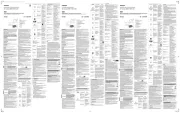
1 September 2025
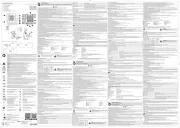
25 Augustus 2025
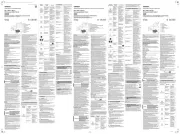
29 Juli 2025
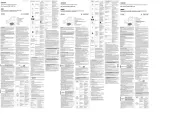
28 Juli 2025
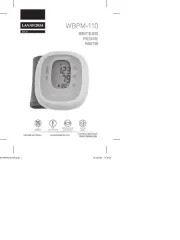
16 Juli 2025
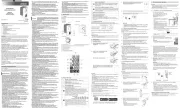
23 Mei 2025
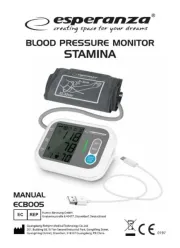
22 Mei 2025
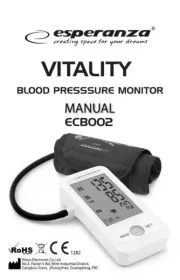
22 Mei 2025
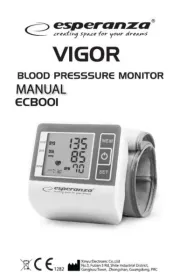
22 Mei 2025
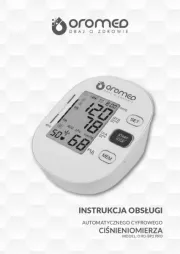
20 Mei 2025